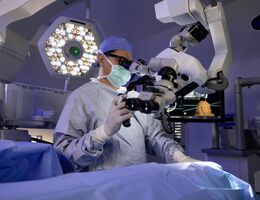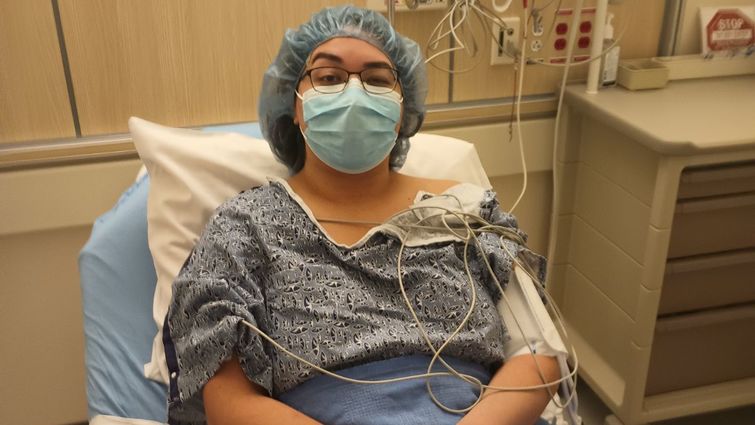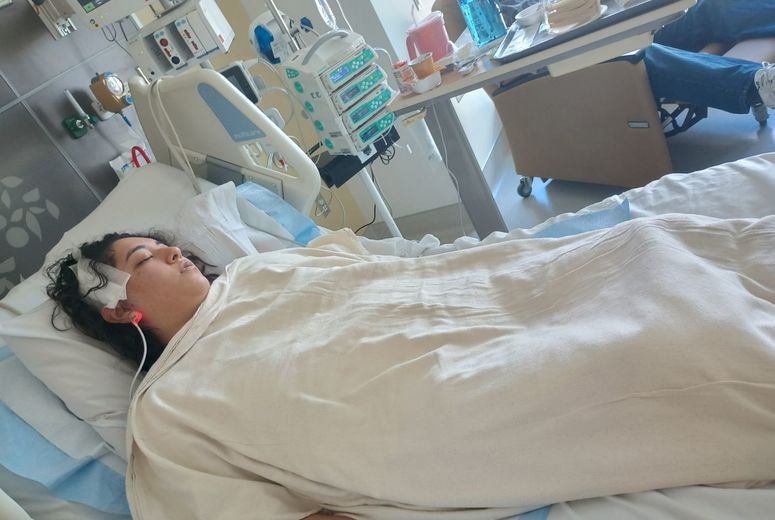

At 22 years old, Ruby Marrujo had no health concerns when she saw her doctor for a routine check-up. Despite dealing with lifelong headaches, Marrujo felt healthy. However, results from her blood test revealed elevated levels of prolactin, which led to Marrujo undergoing an MRI to examine her pituitary gland –– a small endocrine gland located at the base of the brain.
“They found something in your head,” Marrujo’s mother said, reading the results days later. Follow-up scans confirmed a stable but potentially growing six-by-five-millimeter fusiform brain aneurysm –– a bulge or swelling in the wall of a blood vessel, usually caused by a weakness in the blood vessel wall.
While the causes of aneurysms are unknown and can happen to anyone, a ruptured aneurysm is fatal in approximately 50% of cases, and of those who survive, about 66% suffer from some permanent neurological deficit.
Marrujo for the next year, unfortunately, encountered appointment errors, miscommunications, and canceled procedures at other facilities. During that time, her chronic headaches, which had never raised caution before, started to scare her.
“I got really concerned that I’d wake up with a bad headache that would lead to something worse,” Marrujo said. “I’d lay in bed at night stressed out, telling myself to not worry and to just go to sleep.”
But then, her insurance authorized her to be evaluated by the neuroradiology department at Loma Linda University Health. Given the complex fusiform shape of the aneurysm, it couldn’t be treated with standard neuroendovascular techniques such as coils or stents, or standard surgical clippings. Subsequently, she was referred to the neurosurgery department to undergo bypass brain surgery with Miguel Lopez-Gonzalez, MD.
“After all the issues I had with my previous doctors, I was very happy to be at Loma Linda,” Marrujo said. “It’s the most prestigious hospital in the area.”
From there, everything moved quickly. Her angiogram of the brain –– a procedure that uses a special dye and X-rays to see how blood flows through the brain –– confirmed that the shape and size of her aneurysm meant a bypass brain surgery was the only option to prevent a potentially fatal rupture.
But Marrujo didn’t agree to the surgery right away. As a secondary provider for her family of four, she was concerned with being able to work and support her family. She also had her brain and bodily functions to consider.
“Would I think slower?” Marrujo wondered after researching potential outcomes from such a major surgery. “Could I keep doing things like hiking, swimming, or bike riding?"
Despite her reservations, Marrujo proceeded with the surgery, and within a few weeks, Lopez-Gonzalez performed a bypass procedure to eliminate the aneurysm. The six-hour surgery involved placing tiny clips before and after the aneurysm to block and reroute the blood flow. This was achieved by taking an artery from the side of the face and connecting it inside the brain to create a bridge, allowing blood flow to bypass the aneurysm.
Following the surgery, Marrujo spent three months recovering –– five days at the hospital and the rest at home.
“My family visited me every day while I was in the hospital,” Marrujo said. “And when I was home, my mom was the biggest help with things like eating, bathing, and walking.”
Now, five months post-surgery, Marrujo is back at work, her aneurysm completely eliminated thanks to the bypass surgery.
“It’s like nothing ever happened,” Marrujo said about her life after brain surgery. “I feel great, and I’m doing everything I did before discovering the aneurysm.”
Brain aneurysms are unpredictable and can happen to anyone. Since brain aneurysms often develop without symptoms, regular screening is important for individuals with a family history of aneurysms, certain genetic conditions, or other risk factors. Early identification of aneurysms allows for timely medical intervention, which can prevent severe life-threatening complications such as stroke, brain damage, or death.
If you or someone you love has a history of migraine headaches, it’s important to get scanned to rule out serious concerns. For more information, call 909-558-2880 or click here.



